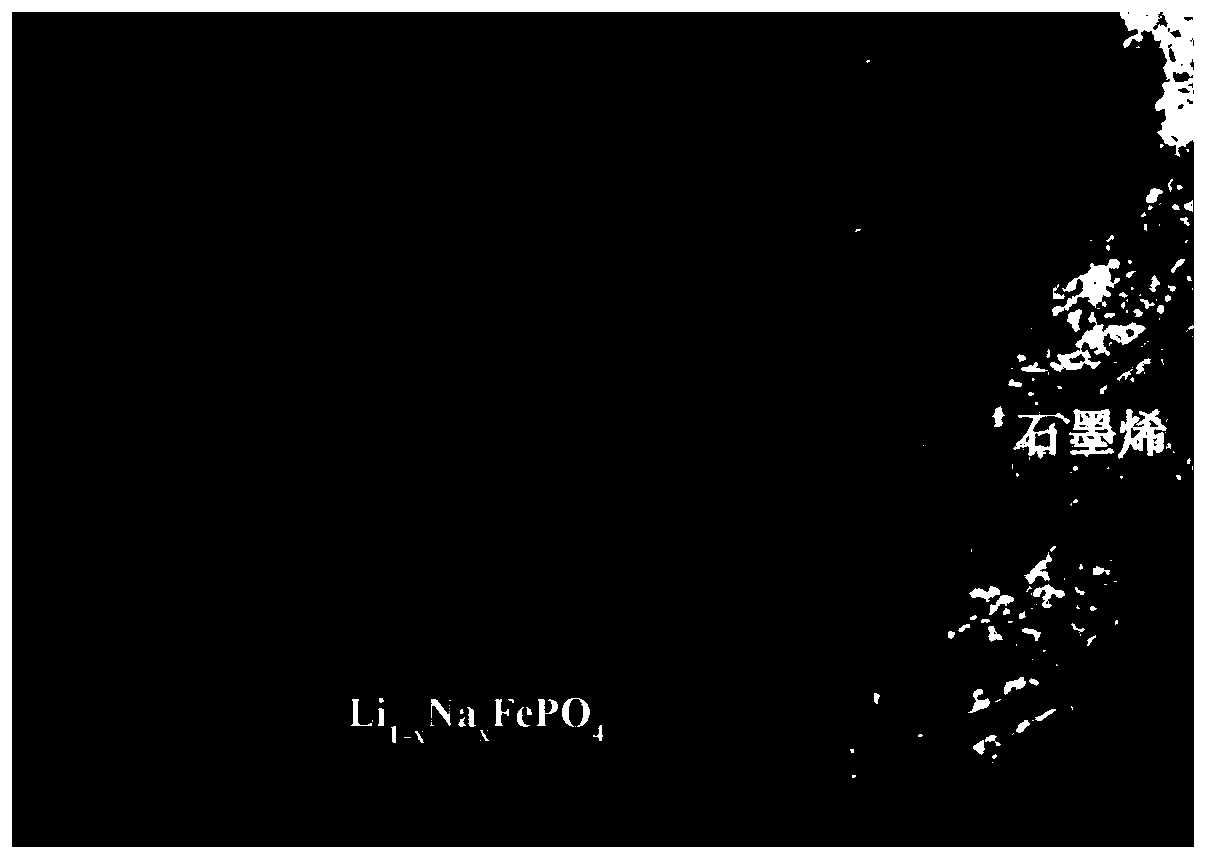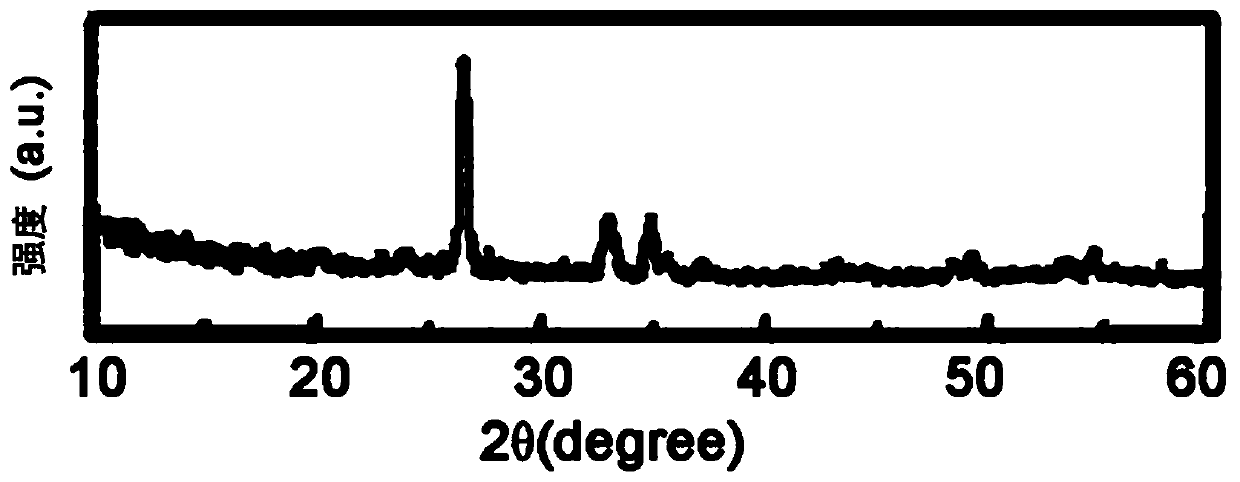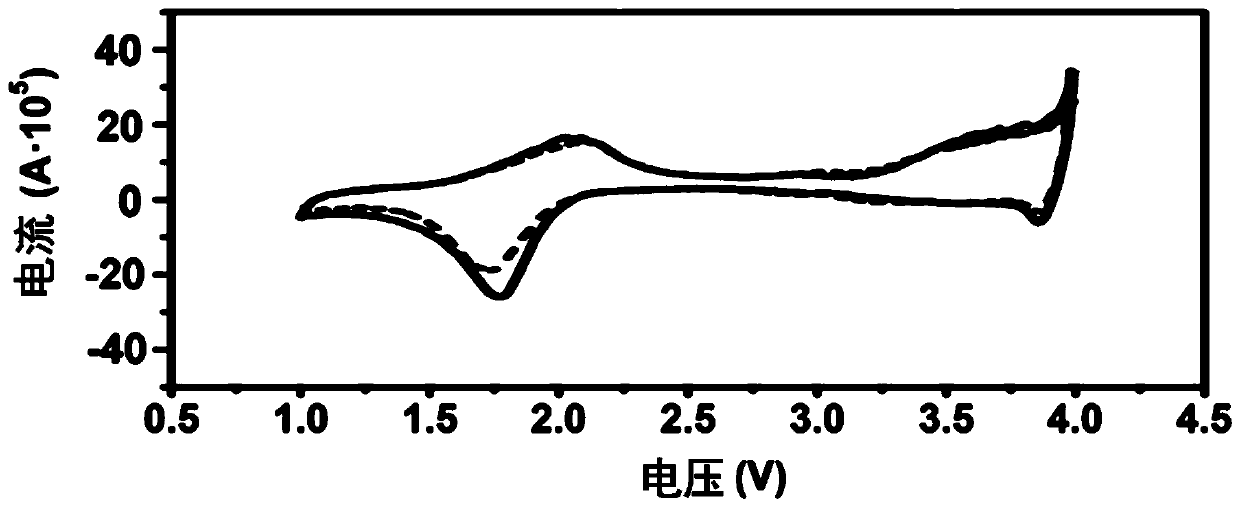Carbene li 1-x na x fepo 4 Nanomaterials and their preparation methods and applications
A nanomaterial, carbene technology, applied in nanotechnology, nanotechnology, nanotechnology for materials and surface science, etc., can solve problems such as poor ion diffusivity, low conductivity, and poor electrochemical performance
- Summary
- Abstract
- Description
- Claims
- Application Information
AI Technical Summary
Problems solved by technology
Method used
Image
Examples
preparation example Construction
[0031] Carbene Li of one embodiment 1-x Na x FePO 4 The preparation method of the nanometer material comprises the following steps S110-S140.
[0032] S110, dissolving the lithium source compound, the sodium source compound, the iron source compound, the phosphorus source compound and the carbon source substance in water to form a mixed solution.
[0033] Specifically, the prepared mixed solution may be a solution or a suspension.
[0034]In one embodiment, the lithium source compound is selected from at least one of lithium chloride, lithium sulfate, lithium acetate, lithium nitrate, lithium carbonate, lithium hydroxide and lithium oxalate.
[0035] In one embodiment, the sodium lithium source compound is at least one selected from sodium chloride, sodium sulfate, sodium acetate, sodium nitrate, sodium carbonate, sodium hydroxide and sodium oxalate.
[0036] In one embodiment, the iron source compound is a ferrous salt. Ferrous ions increase ion diffusivity and conductiv...
Embodiment 1
[0067] Preparation of carbene Li 1-x Na x FePO 4 nanomaterials
[0068] Mix 0.4mol / L lithium chloride solution, 0.1mol / L sodium chloride solution, 0.5mol / L ferrous sulfate solution and 0.2mol / L carbon black, then add 0.5mol / L trisodium phosphate solution Mix to form a suspension and add it to an autoclave. Under the condition of 100° C., magnetically stir the reaction for 22 hours, then centrifuge at 2000 rpm for 10 minutes, filter, and wash with deionized water three times. The obtained solid was dried at a temperature of 45° C. to obtain a precursor. Carbon-based Li 1-x Na x FePO 4 rice powder. Carbon-based Li 1-x Na x FePO 4 The nanometer powder is mixed with 10% graphene oxide by mass, and a small amount of acetone is added to make a slurry. The slurry was fully ground by a ball mill for 20 h at room temperature under an argon atmosphere, and then fully dried at a temperature of 30 °C under vacuum to obtain the carbene Li 1- x Na x FePO 4 nanomaterials.
[...
Embodiment 2
[0075] Preparation of carbene Li 1-x Na x FePO 4 nanomaterials
[0076] Mix 0.6mol / L lithium nitrate solution, 0.1mol / L sodium sulfate solution, 1.0mol / L ferrous chloride solution and 0.1mol / L graphite, then add 1.0mol / L trisodium phosphate solution and mix, The resulting suspension was added to an autoclave, and reacted under magnetic stirring for 24 hours at 80° C., followed by centrifugation at 2000 rpm for 10 minutes, filtering, and washing with deionized water three times. The obtained solid was dried at a temperature of 60° C. to obtain a precursor. Carbon-based Li 1-x Na x FePO 4 rice powder. Carbon-based Li 1-x Na x FePO 4 The nanometer powder is mixed with 5% carbon nanotubes by mass, and a small amount of acetone is added to make a slurry. The slurry was fully ground by a ball mill for 20 h at room temperature under an argon atmosphere, and then fully dried at a temperature of 30 °C under vacuum to obtain the carbene Li 1-x Na x FePO 4 Nano powder.
[...
PUM
 Login to View More
Login to View More Abstract
Description
Claims
Application Information
 Login to View More
Login to View More - R&D
- Intellectual Property
- Life Sciences
- Materials
- Tech Scout
- Unparalleled Data Quality
- Higher Quality Content
- 60% Fewer Hallucinations
Browse by: Latest US Patents, China's latest patents, Technical Efficacy Thesaurus, Application Domain, Technology Topic, Popular Technical Reports.
© 2025 PatSnap. All rights reserved.Legal|Privacy policy|Modern Slavery Act Transparency Statement|Sitemap|About US| Contact US: help@patsnap.com



